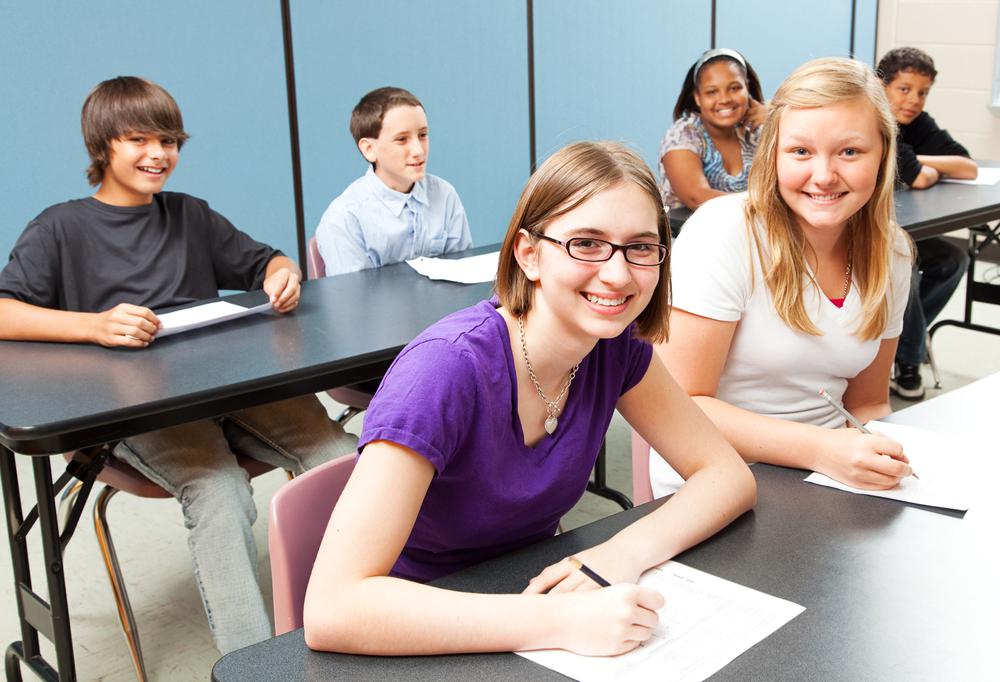Abstinence-only sex education has fallen out of favor in recent years, after repeated studies show it doesn’t persuade kids to abstain and it is likely to discourage kids from using contraception when they do have sex. But while it’s good to shift toward a more realistic sex-ed approach that accepts that most people will start having sex in their late teens, we still have to educate younger teenagers, particularly middle-schoolers, who should delay having sex for a few more years at least. Does an abstain-for-now message work better on young teens than the abstain-until-marriage message did? New research from the Wellesley Centers for Women shows that yes, a comprehensive sex-education program that includes messaging about abstaining for now produces impressive results.
Researchers tracked students who went through a program called Get Real that was developed by Planned Parenthood for middle-schoolers. Like abstinence-only programs, Get Real emphasizes abstinence and teaches refusal skills, but unlike previous programs that taught kids to abstain until marriage, Get Real realistically frames abstinence as good for younger teens while accepting that things change when you get a little older.
More importantly, Get Real is truly comprehensive, understanding that sexual decision-making is a complex beast that involves relationship issues, self-esteem, beliefs about what others are doing, and having a support network you can turn to with your questions and concerns. Subsequently, students in the program spend time on media criticism, talk about bullying, and discuss the differences between healthy and unhealthy relationships. A lot of emphasis is put on communication skills—not just in the bedroom but in all areas of life. Students are encouraged to practice their communication skills with parents, for instance. Parents were also looped in through homework assignments that asked for parental involvement.
The curriculum seems to be very effective. “Among students who received Get Real, 16% fewer boys and 15% fewer girls had sex compared to their peers who did not take Get Real,” the researchers write in their summary. As researcher Sumru Erkut told ThinkProgress, “People clap their hands over a program that can reduce HIV infections by four percent.” These numbers show that kids are actually learning and listening.
One interesting finding was Get Real’s impact on boys in particular. “Boys who completed the Get Real take-home activities in 6th grade were more likely to delay sex [past] 8th grade than boys who did not complete these activities, highlighting the importance of parents and sons talking earlier and more frequently about sex,” the researchers write. Girls tend to get the brunt of messaging about abstaining or delaying sex, because of cultural assumptions like “boys will be boys.” In fact, many abstinence-only programs pushed the idea that sexual decision-making, particularly delaying or stopping sex, is solely the responsibility of girls, on the faulty assumption that boys can’t help themselves. But this study shows that by actually bothering to talk to boys about sexual choices and responsibility, they too end up making better decisions.
I can’t help but think that Get Real’s message about how abstinence is a temporary thing instead of a long slog has to be part of the reason for its success. Telling a bunch of 13-year-olds that they have to wait for sex for 10 or 15 years, when they get married, is both too big an ask and immediately marks you as an out-of-touch prude whose advice is best ignored. Asking 13-year-olds to wait just a few years until the tumult of early adolescence has subsided and they are in a better position to make rational decisions, however, is a much different thing. In light of that, it’s hard not to wonder if Get Real’s title is aimed more at adults who resist comprehensive sex education than the kids in the classroom.
